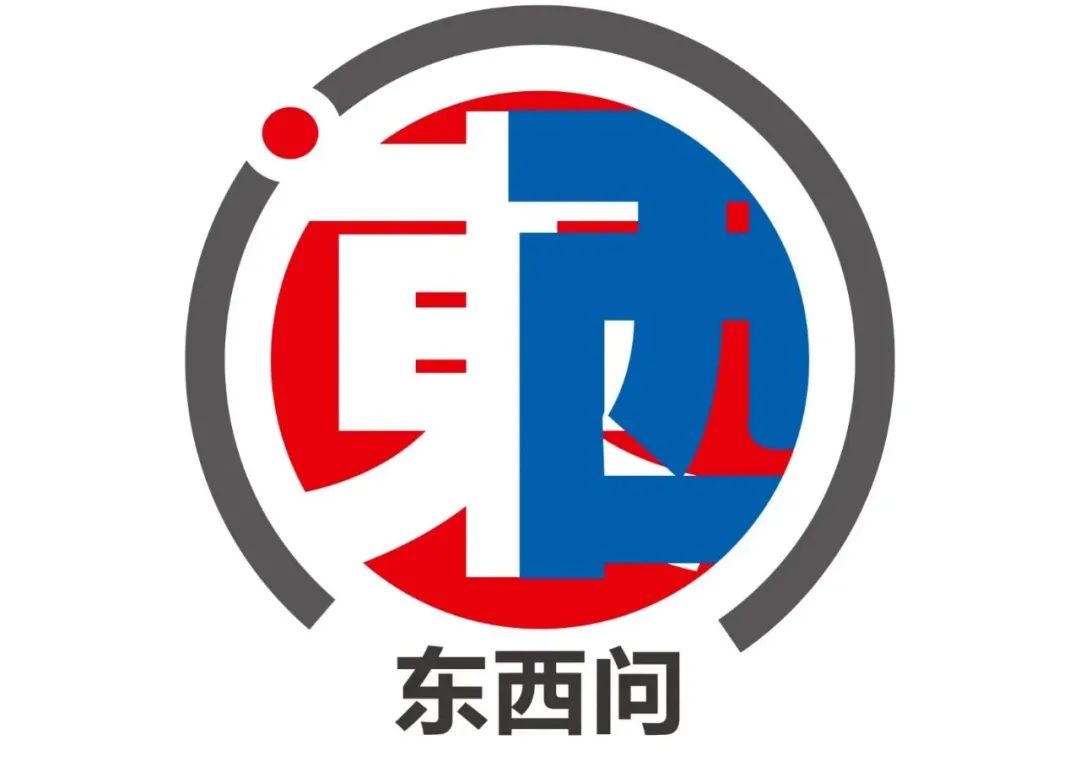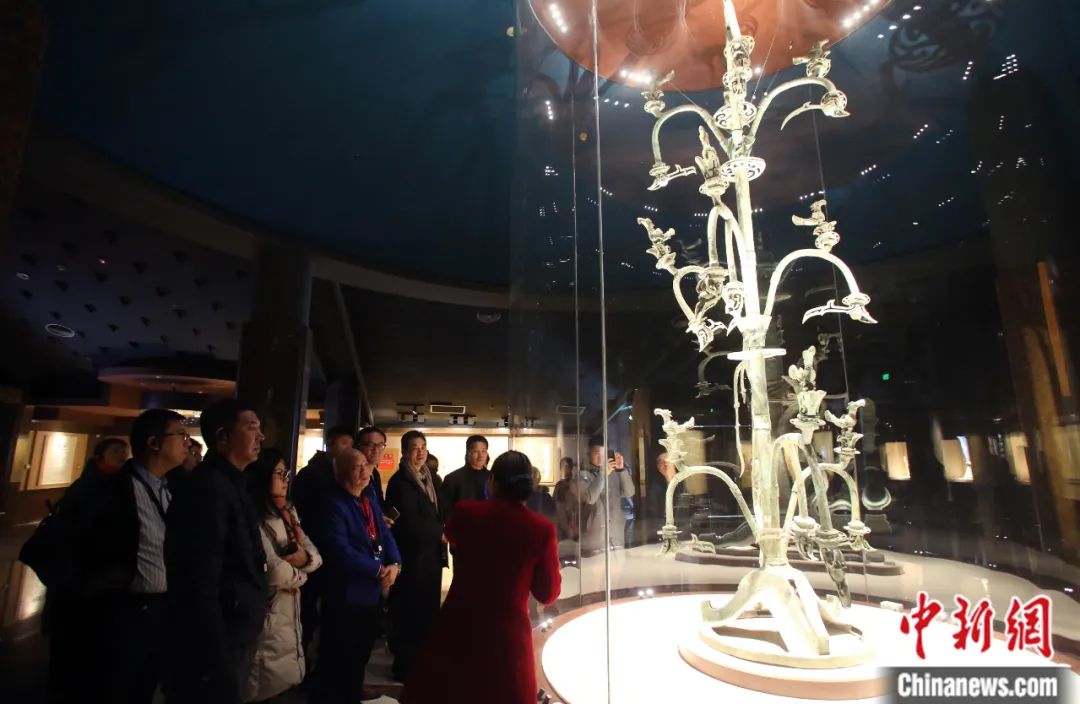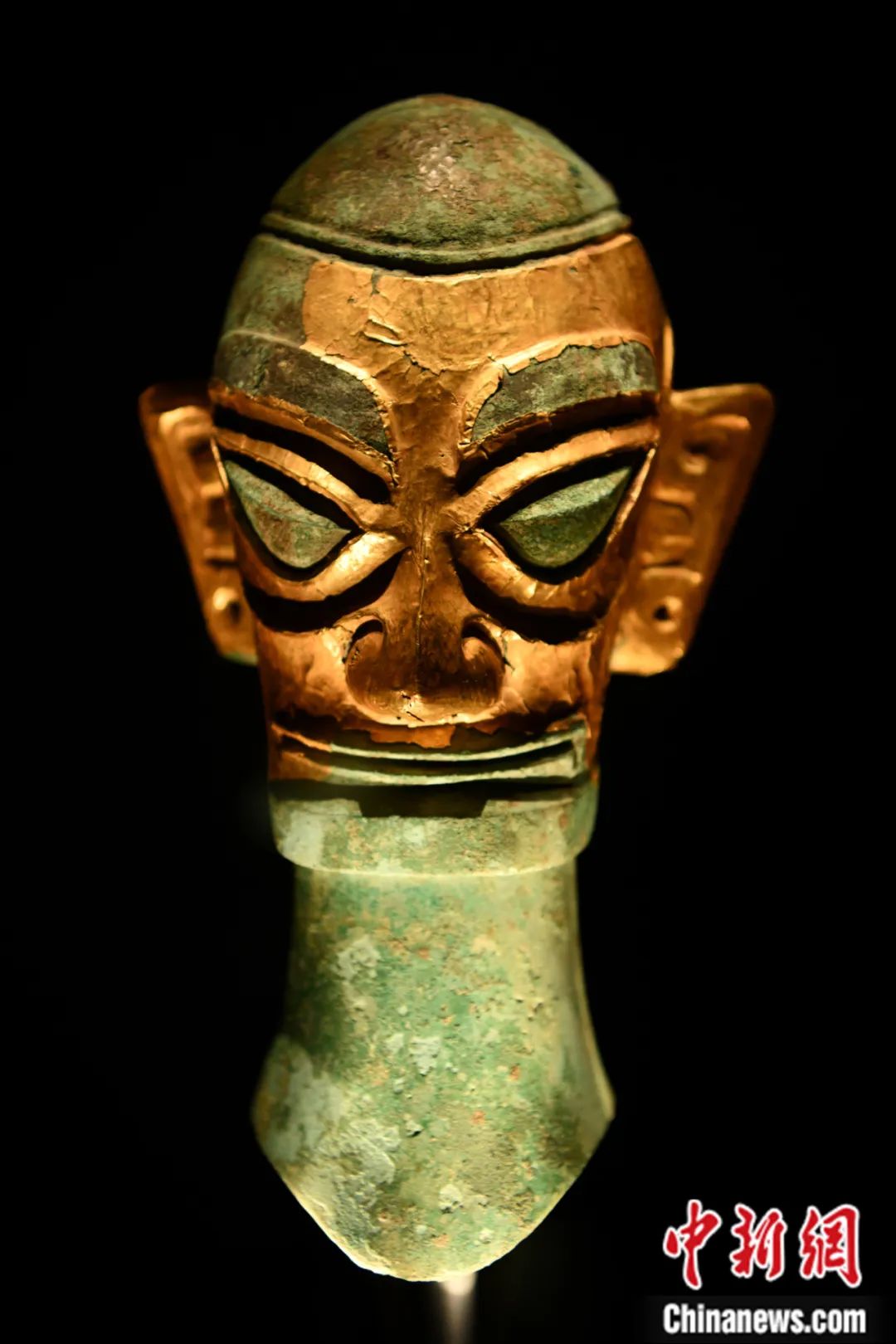Huo Wei: Why should the value and role of Sanxingdui be known at the height of the world history?|
Author:China News Weekly Time:2022.07.16

Sanxingdui culture can not only show the connotation of Chinese bronze culture,
Can also talk to the world
Seeing the common concepts and values in other civilizations in the world

China News Agency reporter: Yue Yitong He Yingqing
Number of full text: 3408
Estimated reading time: 11 minutes

With the announcement of the latest archaeological results of the Sanxingdui site, the heavy weapon of the "re -seeing the sun" has once again attracted global attention. What are the surprises of the latest archeological excavation results of the Sanxingdui site? What is the connection between Sanxingdui bronze culture with the Central Plains civilization? What is the next archeological excavation plan of Sanxingdui sites?
Outstanding professor of Sichuan University, director of the Sichuan University Museum and the president of the Sichuan Archaeological Society Huo Wei recently accepted an exclusive interview with China News Agency's "East and West Questions" to conduct in -depth analysis of the above issues. In Huo Wei's view, Sanxingdui culture can not only reflect the connotation of Chinese bronze culture, the artistic creation of Chinese bronze era, but also can see some common concepts and values in other civilizations in the world through Sanxingdui.
Abstracts are currently recorded as follows:
Reporter of China News Agency: The archeological excavation work of the Sanxingdui Site has been discovered by the Sanxingdui site is close to the end. Many of the newly disclosed cultural relics have never been seen before, causing the world's attention. Why does Sanxingdui bronze civilization show such a mysterious and unique appearance?
Huo Wei: The answer can be found from the latest "country's heavy weapon" unearthed from the Sanxingdui site. A bronze altar unearthed on the 8th sacrifice pit provides the most direct evidence for studying the Sanxingdui sacrifice scene. On the top of this altar is a set of kneeling and beasts. The middle portrait portrays 13 sacrifice participants with different shapes. The portrait of the "C -position" sitting on the round altar, carrying bronzes. Although there is still a lack of 3 people, it is very rare to reflect the sacrifice people in this way.
On the 2nd of 1986, an altar was also unearthed. In the past, it was generally believed that this altar god beast was on the bottom level, which may symbolize the underground world. Essence The newly discovered altar has severely challenged the "Three Realms".
The second one is the turtle -shaped grid -shaped bronze that is called the "Moonlight Treasure Box". This is the first time that this type of utensils found in the 8 sacrifice pits of Samsung Dou. Its surface grid looks like a turtle shell, and there is a piece of jade of the same size in the center of the grid, which is carefully wrapped in silk. The utensils can be opened and closed, with 4 handles, each with a faucet on each handle. At present, the biggest expectation is to find decorations, patterns, and even text on jade. I personally think that this utensil itself is important enough. Tortoise shells are an important carrier of Oracle. In the Central Plains civilization system, it has the significance of the national book. It can be seen that this jade must be of great significance in Sanxingdui sacrifice. The third piece of utensils are also complicated and exquisite. The bronze statues on the head of the bronze statue are respectful, hand -supported, and pedaling birds, and my body turns back. I call it "the top of the bronze statue of the tail of the bird's tail." The tail was missing when it was unearthed, and archaeologists were found in the unearthed utensils on the No. 2 sacrifice pit. After a lapse of 36 years, the two utensils were "breaking the mirror and reunion", which once again stunned the world. Through the "combined" utensils, they can not only see the sophisticated creation of the Sanxingdui people's respect for the Central Plains bronze rituals, but also the organic combination of the Tongtian gods and the sacrifice heavy weapon.
The above three heavier in the bronze wares unearthed around the world so far are unique, showing the mysterious side of the Samsung Dou Civilization in the sacrifice background, showing uniqueness. The novel utensils unearthed from Sanxingdui allowed the world to see the inextricable connections between Sanxingdui culture and Central Plains culture, but also the colorful appearance and profound cultural connotation of Chinese bronze culture.
Bronze and bronze are an important ritual in the Central Plains culture. The "C position" portrait of the first piece of utensils sitting in the center of the altar is the bronze cricket. The image of the state is closely linked; the form of the statue of the statue on the third piece of utensils also reflects the characteristics of the era of the heavens and the earth and the gods of the world.
Bronze altar unearthed from the 8th sacrifice pit. Photo by Zhang Lang, a reporter from China News Agency

China News Agency reporter: What will the archeological work of Samsung Dou in the future will be carried out? Is there any possibility of finding a large sacrifice pit?
Huo Wei: The Sanxingdui site was surprised. The new sacrifice pits were still cleaning up, and a small sacrifice pit and a house base were found around it. This proves that Samsung Dou's sacrifice activities are a whole. In addition to the existence of sacrifice pits, there are other relics in a part of the sacrifice process.
Jade and stone animals were unearthed in the small sacrifice pit. The surface of the eyes, mouth, and other surfaces were traces of Zhuzhu. The shape and the shape of the utensils unearthed from the Jinsha site were very close. These findings may indicate that the time span of Samsung Deda has a long span and rich types.
At present, it seems that the possibility of a large sacrifice pit is less likely to be discovered again. The main work in the next step is indoor restoration. The archeological work of Sanxingdui site sacrifice pit is gradually turning from the scene to the room. It is worth mentioning that the relevant work of the No. 5 and 6 sacrifice pits of the laboratory is carried out.
The pits 5 have been found to be made of jade articles, golden masks, and a large amount of gold, etc., which reasonably speculate that there will be major discovery of Pit 5; in the mysterious wooden box discovered by No. 6 pits, in addition to finding a jade knife, you can also see it. To a large amount of cinnabar and a thick layer of accumulation, the piles are likely to be the secret of the wooden box. You need to be excavated in the laboratory to find the answer. In the future, you may need to be excavated and cleaned up for at least one year.
At present, the sacrifice pit No. 7 and 8 and the No. 2 sacrifice pit discovered in 1986 are likely to be closely linked, and many of the utensils can be paired. Basically, these three pits are formed in the same period. In the future, you can also show the actual situation at that time through the pairing of more utensils.
Archaeologists work on the 8th sacrifice pit. Photo by Zhang Lang, a reporter from China News Agency

Reporter of China News Agency: What are the characteristics of Sanxingdui's "country's heavy weapon"? What is the relationship between Sanxingdui culture and ancient civilization in China? Why should the value and role of Sanxingdui be known at the height of world history?
Huo Wei: Sanxingdui culture is by no means a passive water and rootless wood. Sanxingdui culture is rooted in the land of China and produced in ancient Shu, which can be confirmed from both literature and archeology.
The relationship between Sanxingdui and Central Plains culture is contained. It can also be seen on the utensils that the bronze rituals of Sanxingdui and all jade artifacts can be found in the Central Plains. Even some of the bronze wares with special shapes can still be seen from Sanxingdui people's respect for bronze rituals. It is just that they want to use god animals such as dragons and birds to communicate the world and communicate human gods, so they have a group that looks more strange and exaggerated. But this belongs to the local cultural characteristics of Sanxingdui. The core and basic background of Sanxingdui are still Chinese civilization. Therefore, Sanxingdui reflects the colorful and colorful Chinese culture, and has evidenced the diversity of Chinese civilization.
There are three important dimensions to know Sanxingdui. The first dimension is the relationship between Sanxingdui and ancient Shu civilization. As far as archeological discovery, from the Baodun culture of Chengdu Plain, in the prehistoric Neolithic culture in the Yangtze River and the midstream region, you can find factors similar to the early culture of Sanxingdui. They may be one of the source of Sanxingdui culture.
In the literature classics, you can also see two ancient writing systems with close relationships with Sanxingdui. One is the Central Plains cultural system. In the Western Zhou Dynasty, there was a record of "Shu". At the time, there were Shu people participated in the war among the "Eight Nations of the West". "Historical Records of the Five Emperors" records that when Shu Zhi was the first time, Huang Di and his wife, the son of his wife, married the "Shushan Girl", lived in Ruoshui, and later sealed his support. The other is Bashu Cultural System. "The King of Shu King" and "Huayang Guizhi" all recorded that the ancient Shu period has experienced the silkworm cluster, cypress irrigation, fish 凫, Du Yu, and open generations. Qin's destruction (316 years ago), although the King of Shu in the ancient Shu Shi was far away from the Central Plains dynasty, was regarded by the princes of the Central Plains as the "Barbarians" of the "Siturtle Left", but it also maintained its own department and always maintained it with the Central Plains. The connection between the dynasty is neither foreigners nor non -foreign ethnic groups. The second dimension is to study whether Sanxingdui is closed or open. At present, you can see the inextricable connection between Sanxingdui and the Central Plains Yin Zhou civilization.
The birds on the bronze tree on Sanxingdui and the dragon pattern entangled on the trunk are the common parent questions in the Chinese traditional cultural myth system. The god trees such as the wood, the wood, and the fifth wood are the symbol of the cosmic tree and the sun tree that can "Jedi Tiantong". For another example, in the past, I have not discovered the so -called "rituals" that reflect the social level and identity in the so -called "rituals" that have been discovered in Sanxingdui. Zun, and two bronze Zun and 罍 that were unearthed from the two sacrifice pit in 1986 confirmed each other, implying that the Shu people might use such bronze combinations as rituals.
Visitors visit the Samsung Dou Museum. Photo by Wang Lei, a reporter from China News Agency
In addition, a bronze statue of the gods and man on top of the head on the 4th sacrifice pit of Sanxingdui was found, indicating that this kind of device type has special significance in Sanxingdui bronze wares and is specially respected. It has the same meaning as a ritual expression.

However, these two dimensions alone are not enough to fully understand Sanxingdui, and Sanxing Dump should be inspected in the world civilization system. After the development of human civilization to a certain stage, there will be some similar cultural phenomena and common cultural performance. For example, how to think of the sun, how to think of the center of the world, the center of the universe. Sanxingdui people also believe that they were the center of the world at that time. In addition, there are worship phenomena of large -mysterious eyes, god trees (sun trees, cosmic trees, god trees, etc.), sun gods, etc. in different countries, nations and regions in the world. This type of archeological phenomenon that appears in Sanxingdui cannot be identified as foreign civilizations.
Samsung Dou's attachment of the gold foil foil on the surface of the bronze portrait is a very noteworthy detail. This surface seems to be the characteristics of a Samsung Doujin unearthed utensils, which actually reflects the valuable and scarcity of gold and bronze utensils. Because of the bronze portraits unearthed from Sanxingdui, there are a few that are attached to the golden mask. This approach can also be seen in other civilizations. From the perspective of the grand vision of Chinese and foreign cultural exchanges, the impact of the exchanges between the Chinese bronze era in Sanxingdui and the exchanges of outside the territory has sufficient conditions, and it is also possible to absorb certain foreign culture, but it must not be partial. Park Samsung Dou as the product of foreign civilization.
Bronze people displayed at the Bronze Museum of Sanxingdui Museum in Sichuan. Photo by Zhang Lang, a reporter from China News Agency
Sanxingdui culture can not only express the connotation of Chinese bronze culture, but also talk to the world, and see the common concepts and values in other civilizations in the world.

The formation of Chinese civilization is to be remitted from the trickle to the Great River. It is the gradually aggregated by culture from various regions, and finally forms a national civilization. Sanxingdui provides a sample of the bronze era, allowing the world to see the bronze culture represented by bronze rituals in the Central Plains in the summer, Shang and Zhou Dynasties, but also a bronze culture like Sanxingdui with mythical romantic imagination. The rich connotation and development process compose a new chapter.
Introduction to the interviewee:
Huo Wei, an outstanding professor at Sichuan University, director of the Sichuan University Museum. Photo by Zhang Lang, a reporter from China News Agency
Huo Wei is currently the director of the Sichuan University School of History and Culture (School of Tourism), the director of the Sichuan University Museum, and the director of the Sichuan University Institute of Tibetan Studies at the Ministry of Education's Humanities and Social Sciences Research Base. One of the people, members of the National Social Science Fund, member of the Undergraduate Teaching Instruction Committee of the Ministry of Education, director of the Chinese Archaeological Society, vice chairman of the Sichuan History Association, and vice chairman of the Sichuan Provincial Museum Society.

Text Editing: Han Yu
Picture Edit: Xiong Ran
- END -
Studies have found that bone density scan helps to reveal the risk of dementia
Xinhua News Agency, Sydney, July 18th (Liu Shiyue) Australian Edis Curon University recently released a publicity saying that a international team led by the researcher at the university found that th
The Organization Department of the Municipal Party Committee went to Gudao Town to investigate and guide the work of the town street party school

On the afternoon of June 29, Li Jiangze, the head of the Comprehensive Section of ...